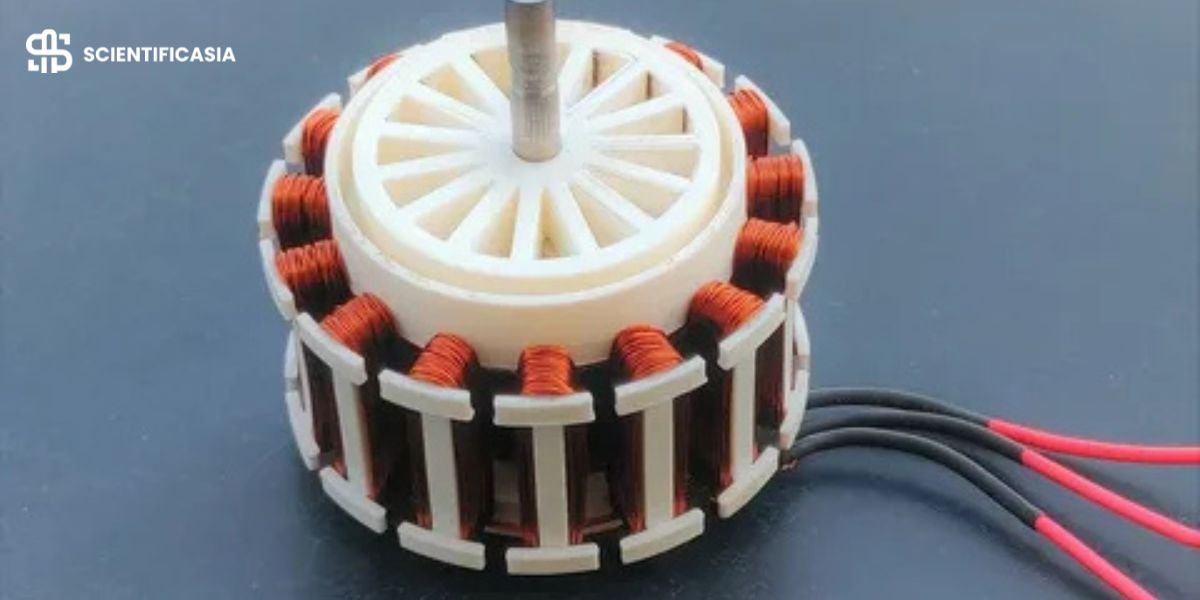In today’s highly competitive industrial landscape, efficiency and productivity are critical to success—especially in sectors such as electric motor manufacturing. Among the most technologically advanced systems are BLDC (Brushless DC) motor production lines, which offer high reliability and performance for a wide range of applications. However, with the complexity of modern automation and growing demand for high-quality output, improving operator efficiency has become a strategic priority.
This article explores practical strategies to improve operator efficiency in a BLDC motor production line, with a particular focus on hairpin motor technologies and smart production environments.
Understanding Operator Efficiency in Motor Production
What Is Operator Efficiency?
Operator efficiency refers to how effectively human operators perform their tasks on the production line within a set time frame. It is usually measured by output volume, task accuracy, and time management.
In a BLDC motor production line, efficiency includes aspects like coil insertion, stator assembly, insulation placement, and the handling of hairpin motor winding techniques.
Why It Matters
Poor operator efficiency leads to:
- Increased production costs
- Delayed order fulfillment
- Higher error rates
- Equipment downtime
Improving this efficiency directly boosts production quality and throughput while reducing waste.
Strategies to Improve Operator Efficiency
1. Implement Skill-Based Training Programs
Continuous Learning and Certification
Operators need specialized skills to work on a hairpin motor winding process or stator assembly tasks. Regularly updating their knowledge through targeted training improves precision and confidence.
Simulation-Based Training
Use virtual or augmented reality simulations to let operators practice complex tasks like pin shaping or coil insertion without risking damage to real components.
2. Optimize Workstation Layouts
Ergonomic Design
Ergonomically designed workstations reduce physical strain and repetitive motion injuries. When tools and components are within easy reach, the time taken per task decreases significantly.
Lean Manufacturing Principles
Use lean principles like 5S (Sort, Set in order, Shine, Standardize, Sustain) to streamline work areas. This reduces time lost in searching for tools or parts.
Smart Automation Integration
3. Use Semi-Automated Tools
Incorporating semi-automated tools—such as coil winding machines or insertion arms—helps operators perform repetitive tasks faster and with greater precision, especially in BLDC motor production lines.
4. Adopt Assistive Robotics
Collaborative robots (cobots) can assist human workers in physically demanding or precision-intensive tasks like wire twisting or lamination stacking. This significantly reduces fatigue and improves consistency.
Data-Driven Efficiency Enhancements
5. Real-Time Performance Monitoring
Install IoT sensors and software that track operator performance in real time. By identifying bottlenecks and variations in task execution, managers can offer timely feedback or additional support.
KPIs to Monitor:
- Cycle time per task
- Downtime incidents
- Error or defect rates
- Output per shift
6. Digital Work Instructions
Replace traditional manuals with digital interfaces that provide real-time instructions, videos, and alerts. This helps operators follow standard procedures, especially during intricate steps in hairpin motor assembly.
Quality Control and Error Reduction
7. Use Standard Operating Procedures (SOPs)
Clearly documented SOPs for every stage—from stator core preparation to winding insertion—ensure that all operators follow best practices. This minimizes variability and training time for new hires.
8. Implement Poka-Yoke Techniques
Poka-Yoke (mistake-proofing) tools ensure components are assembled correctly. For example, fixtures that only allow hairpins to be inserted in one direction prevent costly rework or component damage.
Operator Motivation and Workplace Culture
9. Gamify Performance Metrics
Use friendly competition by displaying performance dashboards that reward high-performing operators. Incentives like bonus points or recognition programs can create a healthy, motivating work environment.
10. Foster Team Collaboration
Encourage cross-training among different roles to reduce over-dependence on single operators. A team-oriented culture improves morale and ensures better task coverage during absences or peak demand.
Leveraging Hairpin Motor Technology
11. Simplify the Hairpin Winding Process
Hairpin motors require precision in cutting, shaping, inserting, and welding copper wires. Investing in jigs, bending machines, and visual aids simplifies the process for operators, improving both speed and accuracy.
12. Optimize Heat Treatment and Insulation
Ensure operators are trained to handle the heat treatment process and insulation placement properly. Mistakes in these stages can compromise motor efficiency and durability.
Maintenance and Support Systems
13. Regular Preventive Maintenance
Encourage operators to report minor machine anomalies before they cause downtime. A well-maintained BLDC motor production line ensures smooth operations and avoids unexpected breakdowns.
14. Quick Troubleshooting Aids
Provide visual troubleshooting charts or digital guides for resolving common issues. Empowering operators to fix minor errors without waiting for a technician saves valuable time.
Conclusion
Improving operator efficiency in a BLDC motor production line is not merely about working faster—it’s about working smarter, safer, and more consistently. From better training programs and ergonomic design to smart automation and real-time data tracking, each improvement contributes to building a high-performance manufacturing environment.
The integration of hairpin motor technology adds complexity but also creates opportunities to raise standards in precision and quality. When operators are equipped with the right tools, training, and motivation, they become the driving force behind a truly efficient and scalable production line.
FAQs
Q1: What is a hairpin motor and why is it used in BLDC production?
A hairpin motor uses flat, pre-shaped copper wires instead of round wires for stator winding. This enhances motor performance, thermal efficiency, and durability—especially in electric vehicles.
Q2: How do cobots help improve operator efficiency?
Cobots assist in repetitive or physically intensive tasks, reducing fatigue and error rates. They work alongside human operators, improving both safety and productivity.
Q3: What tools can help monitor operator efficiency?
IoT devices, real-time dashboards, and digital work instructions can track and enhance operator performance across the production line.
















